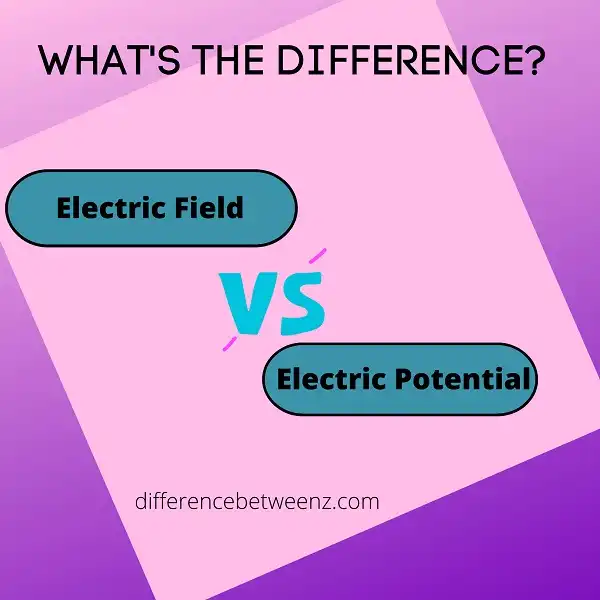Electricity is one of the most important forces in the natural world. It’s responsible for everything from powering our homes to lighting up the sky during a thunderstorm. In this blog post, we’ll take a closer look at two of electricity’s most fundamental concepts: electric field and electric potential. We’ll explore the difference between the two and discuss how they work together to create electrical phenomena. By the end of this post, you’ll have a better understanding of how electricity works and be able to apply that knowledge to solve some common electrical problems. Let’s get started!
What is Electric Field?
The electric field is a measure of the force exerted by an electric charge on other electric charges in its vicinity. It is represented by the symbol E and is measured in units of volts per meter (V/m). An electric field exists when there is a potential difference between two points in space. The electric field represents the force that would be exerted on a negative charge if it were placed at that point in space. The direction of the electric field is given by the direction of the force that would be exerted on a positive charge placed at that point. The strength of the electric field is given by the magnitude of that force divided by the charge of the test particle. Electric fields are created by charges, and they exert forces on charges. The strength of the electric field depends on both the magnitude of the charge creating it and the distance from that charge. The SI unit for measuring electric fields is the volt per meter (V/m). An electric field can also be Yon neutralized by placing opposite charges close together . This will cause there to be no overall potential difference, and hence no overall Electric Field.
What is Electric Potential?
Electric potential is the amount of work that is needed to move a unit charge from one point to another. It is also known as electrostatic potential. Electric potential is commonly represented in volts, which is equal to joules per coulomb. An electric potential can be either positive or negative, depending on the direction of the flow of charge. If the electric potential is positive, then the flow of charge is from high to low. If the electric potential is negative, then the flow of charge is from low to high. An electric potential can be created by either static or moving charges. Electric potential is not affected by gravity, but it can be affected by other forces, such as magnetic fields. An electric potential can be measured using a voltmeter.
Difference between Electric Field and Electric Potential
The electric field is a measure of the force exerted on a charged particle by an electric field. The SI unit for electric field strength is volt per meter (V/m). The electric potential, also known as the voltage, is the work done per unit charge to move a charge from a point of zero potential to a point in an electric field. The SI unit for electric potential is volts (V). Electric potential is often used to describe the work done by an electrostatic force to move a charge from one point to another. However, it should be noted that the concept of potential difference exists only between two points; there is no such thing as absolute potential.
Conclusion
Electric fields and electric potentials are two important concepts in electromagnetism. We’ve looked at the difference between the two, and how they are related. We hope this article has helped to clear up any confusion you may have had about these terms.


